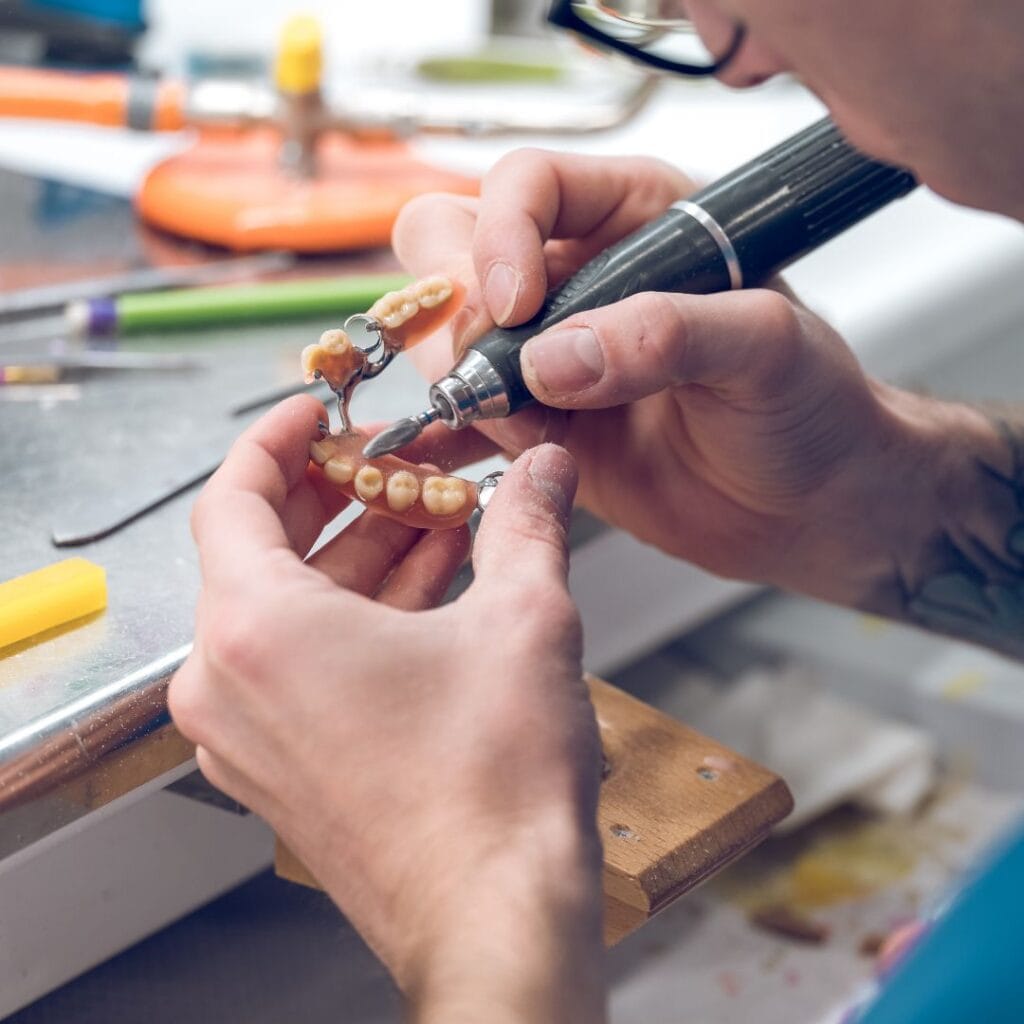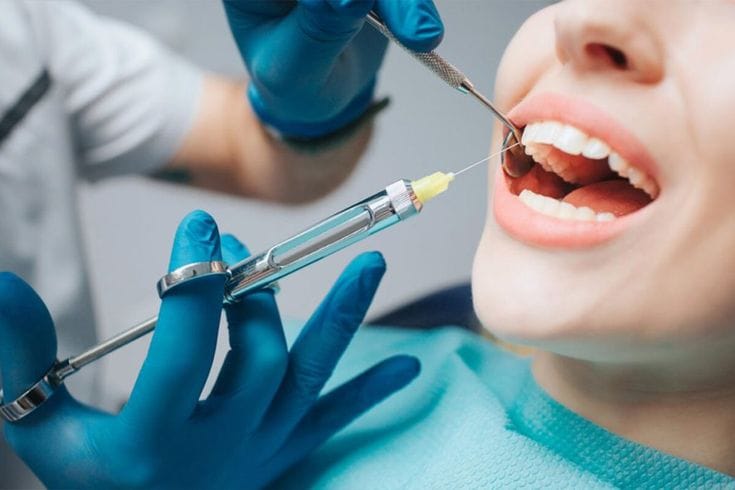Thanks to dental technology advancements, the way dental care is delivered has changed dramatically. From digital impressions to 3D printing, dentists now rely on cutting-edge technology to improve patient care and ensure more accurate, faster treatments. These innovations reflect the growing influence of new technology on the future of dentistry, offering more comfortable and effective solutions for both patients and professionals.
Introduction to Modern Dental Technology
This opening section sets the stage by highlighting how advancements in dental technology are transforming the way dental care is delivered. It introduces key themes such as innovation, new technologies, and patient care, emphasizing the broad impact of the influence of new technology on both individual outcomes and the public health perspective. It also lays the foundation for discussing how these shifts are improving oral health habits and access to better dental services.
Did you know?
Digital dentistry has reduced chair time by up to 60% in some procedures, improving both accuracy and patient care.
How Technology is Transforming Dental Care Today
The way dental care is delivered has been revolutionized by advancements in dental technology, transforming both patient experiences and treatment outcomes. From digital x-rays to 3D printing, innovations in technology have allowed dentists to perform various dental procedures with enhanced precision and efficiency. This shift is not only improving the quality of care but is also making dental care more accessible to a broader population. According to the American Dental Association, new technology in dental care has significantly influenced public health perspective, as it bridges the gap between medicine and dentistry. Additionally, the integration of technology into dental practices contributes to better dental health and encourages improved oral health habits, benefiting both current and future patients.
The Rise of Digital Dentistry
This section focuses on digital dentistry as one of the most significant innovations in the field of dentistry. It explores how digital technologies. Such as digital impressions, intraoral scanners, and 3D printing . Have streamlined various dental procedures. The discussion reflects how this technological advancement supports better patient care and is transforming the dental practice by offering faster, more precise, and more personalized treatments.
Key Innovations in Digital Dental Tools
Digital dentistry has introduced a wave of innovation that continues to reshape the field of dentistry. Using digital impressions, dentists can now create customized dental restorations with improved accuracy and reduced patient discomfort. The shift from traditional dental impressions to intraoral scanning marks a significant technological advancement. Furthermore, 3D printing and digital technologies have enabled faster fabrication of dental prostheses such as crowns and bridges. Many dental professionals have adopted this cutting-edge technology, improving workflow in the dental laboratory and ultimately enhancing patient care. These innovations not only streamline procedures but also represent a new dental standard for efficiency and personalization.
The Role of AI in the Future of Dentistry
Artificial intelligence (AI) plays a critical role in the future of dentistry, particularly in diagnosis and treatment planning. AI-powered systems can detect caries, decay, and gum disease with exceptional accuracy, helping dentists make better patient decisions. Additionally, from a dental education standpoint, dental students now benefit from virtual training platforms powered by AI, which simulate complex dental procedures. The school of dentistry environment has evolved, emphasizing real-time data analysis and predictive models that support early detection and preventive care. As technology continues to evolve, its integration will further enhance the approach to dental care and raise the overall quality of dental treatment.
Did you know?
3D printing allows dentists to create crowns and dental prostheses in a single visit, revolutionizing restorative dentistry.
Dental Implants: A New Era in Tooth Replacement
Here, the spotlight is on dental implants as a cutting-edge solution for patients with missing teeth. The section explores how technology allows for more accurate implant placement and how advanced technologies, including imaging technology, have improved dental implant surgery. This advancement showcases how restorative dentistry now prioritizes precision, durability, and aesthetics—marking a new dental standard for replacing missing teeth.
How Digital Dentistry Enhances Implant Precision
Dental implants have become the gold standard for replacing missing teeth, and digital dentistry has significantly improved their placement accuracy. Imaging technology and 3D-guided systems allow for precise surgical planning, minimizing complications and improving healing time. Advanced technologies such as cone-beam CT scans enable dentists to visualize bone structure before dental implant surgery, offering a safer, more predictable outcome. This influence of new technology on dental care is a clear example of how technology has improved patient outcomes in restorative dentistry.
Why Dental Implants Are Revolutionizing Dental Care
Implants not only replace missing teeth but also preserve jawbone integrity, unlike traditional dental bridges. Thanks to the advancement in dental implant technology, dentists can now offer patients long-lasting solutions with enhanced aesthetics. The use of new materials and digital workflows ensures more reliable results. Innovations in technology have also reduced surgery time and improved the comfort of recovery, demonstrating how the new dental era prioritizes both function and patient comfort. As part of better dental strategies, implants are integral in achieving lasting dental health outcomes.
Cavity Detection and Treatment Improvements

This section addresses how technological advances are enhancing cavity detection and treatment. It emphasizes the role of digital x-rays, AI tools, and smart diagnostic systems in identifying caries and decay early. The integration of digital technology into the treatment planning process supports more conservative dental procedures and better patient outcomes, underlining the impact of new technology on dental care from both a clinical and public health perspective.
Digital Solutions for Early Cavity Diagnosis
Early detection of caries is crucial in preventing extensive dental treatment. Digital x-rays and intraoral cameras provide high-resolution images, enabling dentists to identify cavity formation before it progresses. These advancements in dental technology support more conservative treatment approaches and align with a public health perspective that emphasizes prevention. Furthermore, AI-enhanced tools are now being used to analyze radiographs, offering a systematic review and meta-analysis of oral conditions in real time. Such developments highlight how technology allows dentists to deliver more effective care with less invasive procedures.
Did you know?
Recent dental research has shown that laser dentistry reduces bleeding and healing time in gum treatments.
Better Dental Restoration with Advanced Materials
The introduction of new materials in dental restorations has dramatically improved the success and longevity of treatments. These innovations allow for the creation of crowns that closely mimic natural teeth in function and appearance. Dentists can now create crowns using 3D printing and CAD/CAM systems, streamlining the fabrication of dental restorations within a single appointment. This not only improves patient satisfaction but also enhances treatment outcomes. As digital technology becomes a mainstay in dental practice, the benefits of restorative dentistry will continue to expand.
Enhancing Gum Health Through Technology

Focused on improving gum health, this section highlights how laser dentistry and other innovations in technology are reshaping periodontal treatments. It explains how these technologies lead to less invasive interventions and faster healing. In addition, the inclusion of smart devices helps monitor gum and dental health, offering an approach to dental care that is proactive, data-driven, and aligned with the goals of better dental outcomes.
Laser Treatments for Gum Disease
Laser dentistry has changed the way dentists approach gum disease treatment. Instead of traditional surgical methods, lasers provide a minimally invasive solution that reduces pain, bleeding, and recovery time. These technological advances have proven effective in addressing both moderate and severe gum issues, ensuring better patient experiences. According to recent technological advances in periodontics, laser treatments are now a preferred choice in many dental practices. By incorporating laser technology into dental care, professionals are offering more precise and comfortable solutions for patients suffering from periodontal disease.
Smart Devices for Monitoring Dental Health
Smart dental devices represent a new frontier in oral health management. From Bluetooth-enabled toothbrushes to real-time monitoring apps, these tools help patients track their brushing habits and gum health. These innovations not only support better dental hygiene but also empower patients to take an active role in their dental health. The influence of new technology extends beyond the clinic, promoting preventive care from a public health perspective. Dentists can also use data from these devices to personalize patient care plans, further integrating technology into dental treatment.
The Future of Dentistry
This forward-looking section explores how the future of dentistry will be shaped by digital integration and AI. It discusses the role of dental research, dental education, and the school of dentistry in preparing dental students for a high-tech clinical environment. Topics include how digital platforms and predictive analytics will create a more customized and accessible approach to dental care, improving both the quality of care and patient satisfaction.
Personalized Dental Care with Digital Integration
The future of dentistry is being shaped by personalized treatment powered by digital integration. By combining patient history, AI insights, and advanced imaging technology, dentists can now offer customized care plans that address individual needs more effectively. This approach to dental care emphasizes prevention and early intervention, leading to better patient outcomes. Furthermore, as digital technologies become more affordable and widespread, dental care more accessible to underserved populations. The technology advances happening today are setting the stage for a smarter, more inclusive dental future.
How Technology Will Improve Dentist-Patient Interaction
Digital platforms have not only improved clinical practices but also enhanced how dentists communicate with patients. Virtual consultations, AI chatbots, and interactive treatment models make it easier for patients to understand their options and engage with their care providers. This transformation ensures that patient care becomes more transparent, efficient, and satisfactory. From the perspective of the national institutes of health, integrating new technology in dental care is essential for improving the overall quality of care and fostering trust between patients and dental professionals.
Frequently Asked Questions about Dental Technology
How is technology used in modern dentistry?
In modern dental practice, technology in dentistry supports accurate treatment planning, improves diagnostics, and enhances the quality of care through tools like digital x-rays, intraoral scanners, and AI-based systems. These advances enable dental professionals to deliver personalized care and perform various dental procedures with greater efficiency.
What is the newest technology in dentistry?
Among the most exciting new dental tools is 3D printing, which allows clinics and dental laboratories to create customized dental restorations like crowns and bridges. This new technology in dental care speeds up the fabrication of dental prosthetics while increasing accuracy and patient satisfaction.
What is the new technology to regrow teeth?
Recent dental research is exploring new materials and regenerative therapies aiming to replace missing teeth naturally. Though still experimental, this advancement may reduce the need for dental prosthetic restorations and shift focus toward biologically-based solutions. A major leap in medicine and dentistry collaboration.
Can You Get Dental Veneers With Missing Teeth
Dental veneers are ideal for reshaping and whitening teeth but aren’t suitable for missing teeth. Instead, patients often need dental implant surgery or dental prostheses first. Once structural support is restored, veneers may be combined with other restorative dentistry techniques for aesthetic enhancement.
As technology continues to evolve, the future of dentistry looks brighter than ever. From digital dentistry to dental implants, every technological advancement enhances patient care and supports more precise, efficient treatments. Backed by dental research and global institutions, these innovations ensure a smarter, more accessible approach to dental care. Creating a truly better dental future for all.
Read also about Water flosser vs Traditional floss